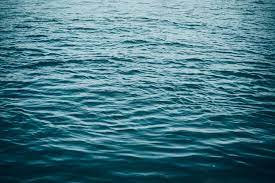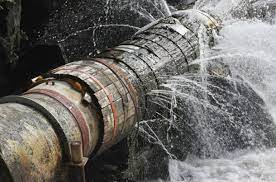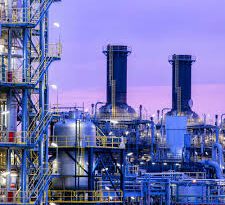Determination of Physico-Chemical Parameters of Water
Water must be tested with different physico-chemical parameters of water. It is very essential and important to test the water before it is used for drinking, domestic, agricultural or industrial purpose.
Selection of parameters for testing of water solely depends upon for what purpose we are going to use that water and what extent we need its quality and purity. Water contain different types of floating, dissolved, suspended and microbiological as well as bacteriological impurities.
Some physical test should be performed for testing of its physical appearance such as temperature, color, odour, pH, turbidity, TDS etc., while chemical tests should be performing for its Biochemical oxygen demand, BOD, chemical oxygen demand, COD, dissolved oxygen, alkalinity, hardness and other characters.
For obtaining more and more quality and purity of water, it should be tested for its trace metals, heavy metal contents and organic i.e. pesticide residues.
It is obvious that drinking water should pass these entire tests and it should contain required amount of mineral level.
Only in the developed countries all these criteria’s are strictly monitored. Due to very low concentration of heavy metal and organic pesticide impurities present in water, there is a need for highly sophisticated analytical instruments as well as trained manpower.
Physico-Chemical Parameters of Water
The following different physico-chemical parameters are tested regularly for monitoring quality of water.
1. Temperature
In an established system the water temperature controls the rate of all chemical reactions, and affects fish growth, reproduction and immunity. Drastic temperature changes can be fatal to fish.
2. pH
pH is most important in determining the corrosive nature of water. The lower the pH value the higher is the corrosive nature of water. pH can be positively correlated with electrical conductance and total alkalinity.
The reduced rate of photosynthetic activities affects the rate of assimilation of carbon dioxide and bicarbonates which are ultimately responsible for increase in pH, the low oxygen values coincided with high temperature during the summer months.
Various factors bring about changes in the pH of water. Higher pH values suggest that carbon dioxide, carbonate-bicarbonate equilibrium is affected more due to change in physico- chemical condition.
3. EC (Electrical Conductivity)
Conductivity shows significant correlation with ten parameters such as temperature, pH value, alkalinity, total hardness, calcium, total solids, total dissolved solids, chemical oxygen demand, chloride and iron concentration of water.
It is measured with the help of EC meter which measures the resistance offered by the water between two platinized electrodes. The instrument is standardized with known values of conductance observed with standard KCl solution.
4. Carbon Dioxide
Carbon dioxide is the end product of organic carbon degradation in almost all aquatic environments and its variation is often a measure of net ecosystem metabolism.
Therefore, in aquatic biogeochemical studies, it is desirable to measure parameters that define the carbon dioxide system.
CO2 is also the most important greenhouse gas on Earth. Its fluxes across the air-water or sediment-water interface are among the most important concerns in global change studies and are often a measure of the net ecosystem production/metabolism of the aquatic system.
There are various readily measurable parameters of aquatic carbon dioxide system: such as pH (pCO2), total dissolved inorganic carbon (DIC) and total alkalinity (TA). Surface water pCO2 can be measured by photometric method.
5. Alkalinity
It is composed primarily of carbonate (CO32-) and bicarbonate (HCO3–). Alkalinity acts as a stabilizer for pH. Alkalinity, pH and hardness affect the toxicity of many substances in the water.
It is determined by simple dil HCl titration in presence of phenolphthalein and methyl orange indicators.
6. Dissolved Oxygen (DO)
DO is one of the most important parameters. Its correlation with water body gives direct and indirect information e.g. bacterial activity, photosynthesis, availability of nutrients, stratification etc.
The high DO in summer is due to increase in temperature and duration of bright sunlight has influence on the percentage of soluble gases (O² & CO²). DO in sample is measured titrimetrically by Winkler’s method after 5 days incubation at 293 K.
The difference in initial and final DO gives the amount of oxygen consumed by the bacteria during this period. This procedure needs special BOD bottles which seal the inside environment from atmospheric oxygen.
7. Carbonate
Whenever the pH touches 8.3, the presence of carbonates is indicated. It is measured by titration with standardized hydrochloric acid using phenolphthalein as indicator.
Below pH 8.3, the carbonates are converted into equivalent amount of bicarbonates. The titration can also be done pH metrically or potentiometrically.
8. Bicarbonate
It is also measured by titration with standardized hydrochloric acid using methyl orange as indicator.
Methyl orange turns yellow below pH 4.0. At this pH, the carbonic acid decomposes to give carbon dioxide and water.
9. Biochemical Oxygen Demand (BOD)
BOD is a measure of organic material contamination in water, specified in mg/L. BOD is the amount of dissolved oxygen required for the biochemical decomposition of organic compounds and the oxidation of certain inorganic materials (e.g., iron, sulfites). Typically, the test for BOD is conducted over a five-day period.
Read Also : Importance of Water and Its Unique Properties
10. Chemical Oxygen Demand (COD)
COD is another measure of organic material contamination in water specified in mg/L. COD is the amount of dissolved oxygen required to cause chemical oxidation of the organic material in water.
Both BOD and COD are key indicators of the environmental health of a surface water supply. They are commonly used in waste water treatment but rarely in general water treatment.
11. Sulphate
It is measured by nephelometric method in which the concentration of turbidity is measured against the known concentration of synthetically prepared sulphate solution.
Barium chloride is used for producing turbidity due to barium sulphate and a mixture of organic substance (Glycerol or Gum acetia) and sodium chloride is used to prevent the settling of turbidity.
12. Ammonia (Nitrogen)
It is measured spectroscopically at 425 nm radiation by making a colour complex with Nessler’s reagent. The conditions of reaction are alkaline and cause severe interference from hardness in water.
13. Calcium
It is measured by complexometric titration with standard solution of ETDA using Patton’s and Reeder’s indicator under the pH conditions of more than 12.0.
These conditions are achieved by adding a fixed volume of 4N Sodium Hydroxide. The volume of titre (EDTA solution) against the known volume of sample gives the concentration of calcium in the sample.
14. Magnesium
It is also measured by complexometric titration with standard solution of EDTA using Eriochrome black T as indicator under the buffer conditions of pH 10.0.
The buffer solution is made from Ammonium Chloride and Ammonium Hydroxide. The solution resists the pH variations during titration.
15. Sodium
It is measured with the help of flame photometer. The instrument is standardized with the known concentration of sodium ion (1 to 100 mg/litre).
The samples having higher concentration are suitably diluted with distilled water and the dilution factor is applied to the observed values.
16. Potassium
It is also measured with the help of flame photometer. The instrument is standardized with known concentration of potassium solution, in the range of 1 mg to 5 mg/litre.
The sample having higher concentration is suitably diluted with distilled water and the dilution factor is applied to the observed values.
17. Chloride
It is measured by titrating a known volume of sample with standardized silver nitrate solution using potassium chromate solution in water or eosin/fluoresce in solution in alcohol as indicator.
The latter indicator is an adsorption indicator while the former makes a red colored compound with silver as soon as the chlorides are precipitated from solution.
18. Silicates & Phosphate
These are also measured spectroscopically. Yellow colour is developed from the action of phosphates and silicates on molybdate ion under strong acidic conditions.
The intensity of colour is directly proportional to the concentration of phosphate and silicates in the sample.
Phosphate complexes are reduced by weak reducing agents such as ascorbic acid or tartaric acid (potassium antimonyl tartarate) whereas silica complexes require strong reducing conditions of hydrazine or bisulphite. The colour of reduced complex is sky blue.
19. Microbial analysis of water
The microbial analysis involves measurement of the quantity or nature of micro-organism that is present in water.
The bacteria in the water could be any of the following species; Escherichia coli, Enterobacter spp., Citrobacter spp., Proteus spp., Serratia spp., Shigella spp., Providencia spp. Morganella spp., Salmonellae spp. and Klebsiella spp.
20. Escherichia coli
Enteric bacteria in the family Enterobacteriaceae reside normally in the guts of many animals, including humans (Wawire et al., 2013).
Some members of Enterobacteriaceae such as Escherichia coli, Enterobacterspp.,and Serratiaspp.are natural inhabitants of the gastro-intestinal tract of human beings and are used as indicators of faecal contamination of the environment.
The pathogenic members of Enterobacteriaceae that infect the gastro-intestinal tract of humans include Salmonella spp., Shigellaspp., Proteusspp., Campylobacter spp. and E.coli.
They get access to the human when ingested through contaminated water, food and oral contact with infected surfaces.
World Health Organization (WHO) developed microbiological quality guidelines based on intended water uses.
The guidelines stipulate that faecal coliforms (FC) should not exceed 10² per 100 ml of water used in irrigation of crops that are eaten uncooked, sports fields, and public parks in unrestricted regions.
Read Also : The Major Effects of Water Pollution
Bacteriological analysis involves determination of the levels of total coliforms and E. coli using the 3 M E.coli/coliforms Petri film count plates.
Table 1. Different analytical water quality parameters with their analytical technique and guideline values as per WHO and USEPA
| Sr.No. | Parameter | Techniqueused | WHO standard | EPA guidelines | |||
| 01 | Temperature | Thermometer | – | – | |||
| 02 | Color | Visual/color kit | – | – | |||
| 03 | Odour | Physiological sense | Acceptable | – | |||
| 04 | Electrical conductivity | Conductivity meter/Water analysis kit | – | 2500 us/cm | |||
| 05 | pH | pH meter | 6.5 – 9.5 | 6.5 – 9.5 | |||
| 06 | Dissolved oxygen | Redox titration | – | – | |||
| 07 | Total Hardness | Complexo-metric titration | 200 ppm | < 200 ppm | |||
| 08 | Alkalinity | Acid – titration | Base | – | – | ||
| 09 | Acidity | Acid – titration | Base | – | – | ||
| 10 | Ammonia | UV Visible Spectrophotometer | 0.3 ppm | 0.5 ppm | |||
| 11 | Bi carbonate | Titration | – | – | |||
| 12 | Biochemical Oxygen Demand (B.O.D.) | Incubation followed titration | by | 6 | 5 | ||
| 14 | Chemical Oxygen Demand (C.O.D.) | C.O.D. digester | 10 | 40 | |||
| 15 | Chloride | Argentometric titration | 250 ppm | 250 ppm | |||
| 16 | Magnesium | Complexometric titration | 150 ppm | 30 ppm | |||
| 17 | Nitrate | UV Visible Spectrophotometer | 45 ppm | 50 mg/l | |||
| 18 | Nitrite | UV Visible Spectrophotometer | 3 ppm | 0.5 mg/l | |||
| 19 | Potassium | Flame Photometer | – | – | |||
| 20 | Sodium | Flame Photometer | 200 ppm | 200 ppm | |||
| 21 | Sulphate | Nephelometer /Turbidimeter | 250 ppm | 250 ppm |
Table 2. Different analytical water quality parameters their source of occurrence and their potential health effects using WHO standard
| Parameters | Sources of occurrence | health effect of the parameters |
| turbidity | soil run-off | Higher level of turbidity are associated with disease causing bacteria’s |
| colour | Due to presence of dissolved salts | ——– |
| Odour | Due to biological degradation | Bad or unpleasant odour |
| Electrical conductivity | Due to different dissolved solids. | Conductivity due to ionizable ions. High conductivity increases corrosive nature of water. |
| pH | pH is changed due to different dissolved gases and solids. | Affects mucous membrane; bitter taste; corrosion |
| Dissolved oxygen | Presence due to dissolved oxygen. | Dissolved Oxygen corrodes water lines, boilers and heat exchangers, at low level marine animals cannot survive |
| Total hardness | Presence of calcium (Ca2+) and magnesium (Mg2+) ions in a water supply.It is expressed. Hardness minerals exist to some degree in every water supply. | Poor lathering with soap; deterioration of the quality of clothes; scale forming |
| Total Alkalinity | Due to dissolved gases (CO2 | Embrittlement of boiler steel. Boiled rice turns yellowish |
| TDS | Presence all dissolved salts | Undesirable taste; gastro-intestinal irritation; corrosion or incrustation |
| Calcium | Precipitate soaps, anionic | Interference in dyeing, textile, paper industry etc |
| Magnesium | surfactants, anionic | ————————— |


Read Also : Environmental Factors Affecting Agribusiness Managerial Functions



